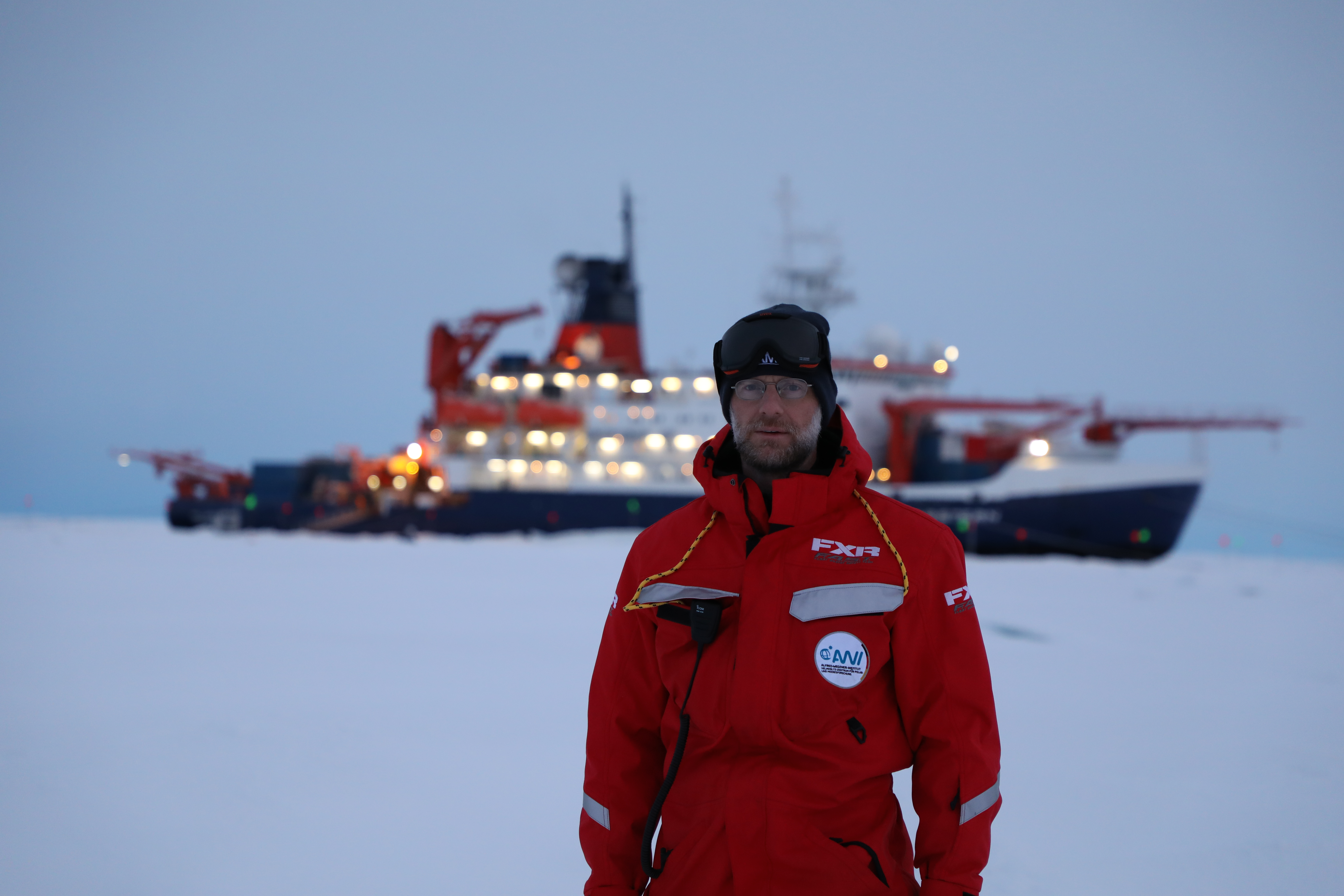AGU Scoop: Arctic Clouds in the Spotlight
Published: 16 December 2020

What Matthew Shupe calls an unprecedented suite of ARM atmospheric instruments helped enabled scientists to identify and quantify cloud properties for a full year in the central Arctic. The venue was the most comprehensive international field campaign of its kind, the 2019–2020 Multidisciplinary Drifting Observatory for the Study of Arctic Climate (MOSAiC) expedition.
Shupe, co-coordinator of the entire international expedition, works with the Cooperative Institute for Research in Environmental Sciences, a partnership of the University of Colorado, Boulder, and NOAA.
During the 2020 American Geophysical Union (AGU) Fall Meeting on December 14, on behalf of nine co-authors, Shupe presented a poster about cloud influences on the surface energy budget during MOSAiC. (Editor’s note: For meeting-specific links, use your AGU login to view.)
Shupe was present for Legs 1 and 4 of MOSAiC. His expedition tasks included being MOSAiC’s atmospheric team lead (Leg 1) and the principal investigator for ARM atmospheric, cloud, precipitation, radiation, and aerosol measurements. The second ARM Mobile Facility was on the icebreaker R/V Polarstern, and some of its radiation and precipitation gear was out on the ice in the expedition’s distributed network.
Shupe was also the principal investigator for a project on surface energy fluxes funded by the National Science Foundation and NOAA.
“The accomplishment of this mission is getting this great data into people’s hands and enabling good science.”
Matthew Shupe, MOSAiC co-coordinator
“I was pretty taxed out there. I had many roles,” said Shupe, adding that the hardship of long days trumped the discomfort of the cold. “But it was worth it. The accomplishment of this mission is getting this great data into people’s hands and enabling good science.”
As for ARM data, “the awesome thing is that it’s available now,” he said. “Now is where the excitement is.”
Arctic Heating and Cooling
Clouds have a substantial impact on the Arctic’s sea-ice surface energy budget―especially because of impacts linked to cloud phase: how much of a cloud is ice or liquid.
The poster and its related abstract focused on a one-month period. It was a clear- and cloudy-sky case study of cloud evolution during the non-melt period as winter began to transition to springtime―an interval in which such measurements are “exceedingly rare,” the authors say.
Clouds drive changes in surface radiation in the coupled atmosphere-ice-ocean system. Clouds also modulate surface temperatures, the turbulent exchange of heat at the surface, and the way heat conducts through sea ice. In winter, the researchers suggest, the presence of liquid clouds warms the surface by 10 degrees Celsius or more. Such clouds also decrease the movement of heat upward through the ice, dependent on snow depth.
On the other hand, when clouds are absent, said Shupe, “the surface is cooling like crazy.”
The researchers looked at the net effects of both clear and cloudy skies and attempted to quantify these effects. The goal, they say, is a conceptual model of cloud impacts on sea ice in the central Arctic.
“I want to do more statistics to represent that,” said Shupe of his evolving work. “We’ve only just started digging in.”
–Contributions by ARM science writer Corydon Ireland
Planning your AGU schedule? Get more information about ARM-focused AGU presentations.
Keep up with the Atmospheric Observer
Updates on ARM news, events, and opportunities delivered to your inbox
ARM User Profile
ARM welcomes users from all institutions and nations. A free ARM user account is needed to access ARM data.


















